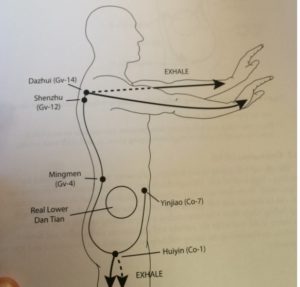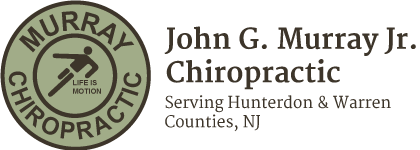Dr. John here again. In our last post we were talking about the yang yin, yin yang continuum from physical, mental, mental to physical. Building on that theme of balance, we have the practice of Qigong (also know as Chi Gong) which is a great way to achieve balance in your every day life.
 It’s going to relate to this drawing, okay? Here it is. In tai-chi we’re looking to build energy and move energy, that’s what we do. In our life, if we don’t move, we’re goners. Life is Motion. It’s been our motto since 1980. Here’s what we’re going to work on. Something that’s very gentle, everyone can do it.
It’s going to relate to this drawing, okay? Here it is. In tai-chi we’re looking to build energy and move energy, that’s what we do. In our life, if we don’t move, we’re goners. Life is Motion. It’s been our motto since 1980. Here’s what we’re going to work on. Something that’s very gentle, everyone can do it.
It’s going to build energy. Nothing better to build your core and your pelvic floor, simply from a physical standpoint, is what this gentle breathing technique is all going to explain to you, and demonstrate for you. It’s called qigong, and there’s many forms of it. Any time you move, there’s qigong. It just depends whether there’s a more yang, physical side to it, or more yin, mental, or a blending of both. There’s always elements in both, remember what we talked about. Okay, so that area we’re talking about that we need to build energy in, that’s called your lower dantian, it’s the battery for your lower body. It’s between your belly button and your pubic bone. It’s about 6-inches inside. I picture it being like a softball, or a larger size area of just energy between your pubic bone and your pelvic umbilical area, your belly button.
Picture your lower dantian, it’s the battery for your lower body. Here’s how breathing works this whole thing. When you inhale, your diaphragm drops. Diaphragm is that muscle that creates, also known as a respiratory bell. The diaphragm drops, and when it drops that is a yin action. Coming in, the yin action. When the diaphragm drops, the belly should push out, the tissues in your lower back should push out, your pelvic floor should drop. While your inhaling the diaphragm’s dropping, this is a yang action below the diaphragm. As you’re inhaling and this is going on, you’re spooling energy around the dantian. Picture spooling energy around the lower dantian. Energy that you’re going to spool off on inhalation.
You’re building energy on the inhale. Then you exhale. Inhale, belly comes out as the diaphragm drops, pelvic floor drops. Exhale, diaphragm raises, belly comes in, pelvic floor rises. You have to envision this, and feel that it’s actually happening. Inhalation, diaphragm drops. Yin action above the diaphragm, yang action below. Spooling the energy. Okay, exhalation what happens? Diaphragm raises, this then becomes a yang action as you exhale, and this below the diaphragm becomes in. As you exhale that energy spools around the diaphragm but spins off and goes underneath your pelvic floor, up your spinal cord, out a point here in your lower neck, out your arms. That what you want to focus on.
You’re inhaling, spooling the energy, exhaling, moving it. Inhaling, diaphragm drops, belly goes out, pelvic floor lowers. Exhale, diaphragm raises, belly comes in, pelvic floor rises. Move the energy around the bottom of your body, up your spinal cord, out your hands. THat’s called two gates training. You do this for about ten breaths every day, and when you’re done you’ll feel the energy in your hands. You must shake it out when you’re done. You’re going do ten breaths, you’re going to inhale, exhale, inhale, exhale. You can see there’s physical elements involved. As I go on with successive breaths I’m going to move my arms in a lesser range of motion. Still activating my breathing, but my arms aren’t going to move as much.
It’s becoming more mental, and after about ten or fifteen breaths I don’t move my arms at all, and it goes even to more of a mental realm. It’s still always somewhat physical though. Then shake out the arms. Inhalation, diaphragm drops, yin action above the diaphragm. Below the diaphragm, as it drops, as you inhale, belly comes out, pelvic floor drops, that’s a yang action. You’re building and spooling the energy around your lower dantian. When you exhale above the diaphragm is a yang action as you exhale and expel the air. As your diaphragm raises, below the diaphragm, that is a yin action. The belly comes in, the diaphragm raises, you’re moving the energy around your lower body and around your pelvic floor, up your spine, and out your arms. That’s what your visualizing. If you can do this ten to fifteen times a day in your life you will see an increase in energy, an increase in vitality, and you will have a strong, strong, strong core and pelvic floor, I guarantee you.
Have a great day!


